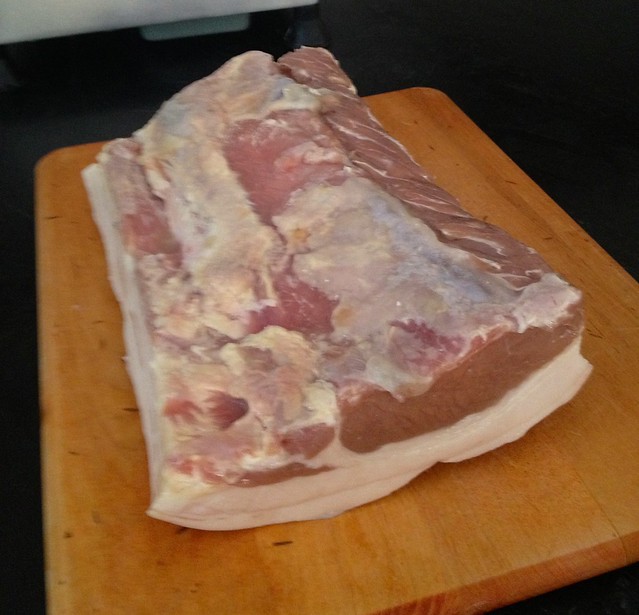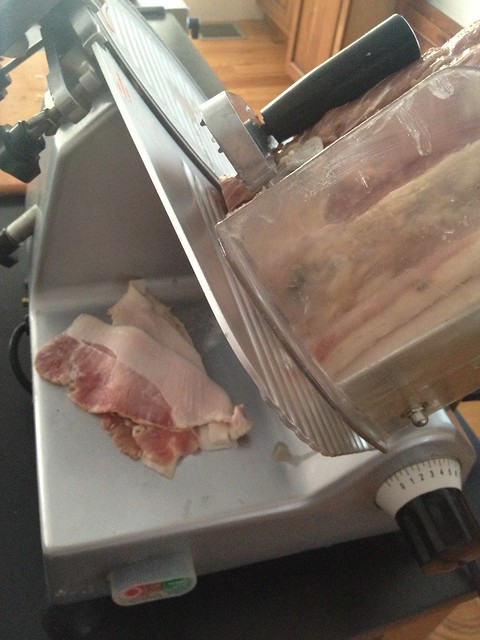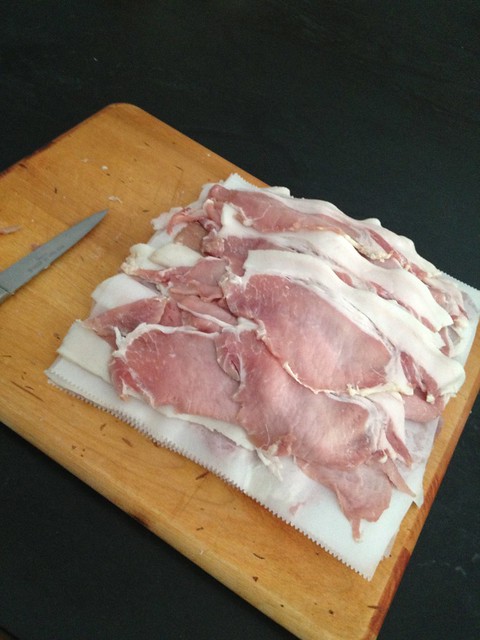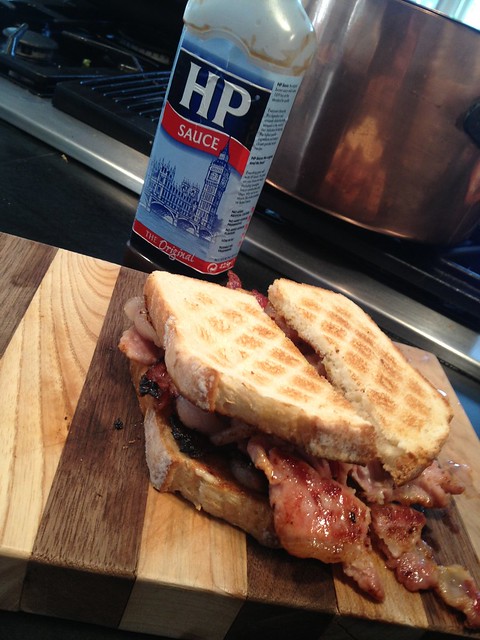Cochinita pibil
/My Bride turns 41 tomorrow. As I'm still in my thirties, I have a hard time imagining what it must be like to have reached such a venerable age. (and I will keep rubbing it in until later this year, when I hit forty myself). But because I was taught to value and respect the wisdom that our elders bring to us, I thought I'd make up a special dinner this weekend.
I've just finished reading a fabulous book - all about one man's quest for the perfect slice of ham, and I was feeling inspired.

The author, Peter Kaminisky, writes professionally for Field & Stream and Food & Wine. He also used to be the managing editor of National Lampoon, which explains a lot about why I was laughing out loud so often at this truly pleasurable book.
This says "A brief history of pigkind" if you can't read it. This is my kind of book.

One of his journeys to define the best pork known to the Western Hemisphere took him to Mexico. And he described a dish so perfect that I had to try making it.
Cochinita Pibil is a pork dish traditional to the Yucatan area that combines citric juices and slow, slow roasting of the meat. Traditionaly, it was buried ('pibil'), which isn't exactly practical in New England in January.
Here's the recipe I used from the book above - with a few modifications of my own to keep it on the simpler side.
Cochinita Pibil
- 2-3 lb pork shoulder or butt. I prefer bone-in, but hey. Use what you have.
- 1 medium onion, sliced
- 1.5 cup pork or chicken stock
Marinade:
- 2 tbs achiote seeds or annato powder
- 1.5 tsp allspice
- 1 tsp black pepper
- 1 tsp cumin
- 0.5 tsp cinnamon
- 1 tbsp dried oregano. Mexican oregano if you can get it.
- 3 tbsp white/cider vinegar
- 6 garlic cloves, peeled & diced fine
- 1 tbsp salt
- 1 tbsp olive oil
- 1/4 cup grapefruit juice
- juice of 1 fresh orange
Directions:
- Combine all ingredients of the marinade except the citrus juice. Achiote seeds or annato powder can be found in a reasonably well stocked Mexican aisle (or in a Filipino grocer). It adds both color and some aroma, and is useful for several Spanish dishes. So go ahead - buy a whole pack. You want the marinade to end up as a paste - you can run it through a food processor, or just grind it up in your mortar & pestle. I did the latter, because I didn't feel like cleaning up the processor afterwards. Besudes, it's fun to mash the hell out of everything. Now go ahead and add it all to a bowl and add the citrus juice. Traditionally, this is made with bitter orange juice, which can be a little hard to find. So grapefruit juice (which seems to be available anywhere that white people live) and orange juice will do you just fine.
- Rub this onto the shoulder - flip and rub the other side. Now put it in the fridge and walk away until the next day.

- This will smell like heaven and you will thank me.
- The next day, pre-heat your oven to 325F. Find your handy dutch oven (le creuset, or other) and heat it up on the stove top. Scrape the marinade out onto a plate (save it!) and sear the pork on the outside in a little oil. Once browned on all sides, add your marinade scrapings and juice back into the pot, along with a cup and a half of stock, and top with fresh sliced onions. It should come most of the way up your pork.
Note: In traditional Mexican cooking, the pot would've been lined with banana leaves, and wrapped around the pork. This retains the juices and allows it to steam itself tender when put into a charcoal lined pit. The dutch oven is doing similar goodness for us here. But if you ever get the chance to cook or eat this the traditional way, you should.
- Bring the pot to a boil on the stove, and then pop it, covered, into your pre-heated oven. Come back 3.5 - 4 hours later. Don't bother checking on it in the meantime. Do what we did and go have a birthday eve nap, if you can.

- When you pull it out, it should be ready to fall off the bone. Pull the meat out of the liquid and shred it with a couple of forks. I piled it back into the enamel pan I used to marinade it (cleaned, of course), and squeezed the juice of another orange on top and put it into the oven on a low broil, to crispy-caramelize just a bit while I finished the rest.
- Put the liquid from the pot back on the stove and bring to a fast simmer. This reduced sauce becomes a fantastic topping for your tacos.
- Top as desired - with a spoonful of the reduced sauce to finish - and serve!

I served it with a fresh cucumber-pineapple-habenero salsa, roast sweet peppers, slices of avacado and warm tortillas. Accompanied with a grilled corn/tomato/cilantro salad and a squeeze of fresh lime. The flavor of the pork is nuanced with citrus, garlic and spices. It's an amazing meal.
This won eye-closed blissful approval from everyone in the house. Definitely a keeper - and because the shoulder is so big, it's a great entertaining meal as well. It's as easy to cook for 8 as it is for 4.
I will note that my Bride went a little lighter on the habenero.
But she is over forty now, so we must make allowances, I suppose.











